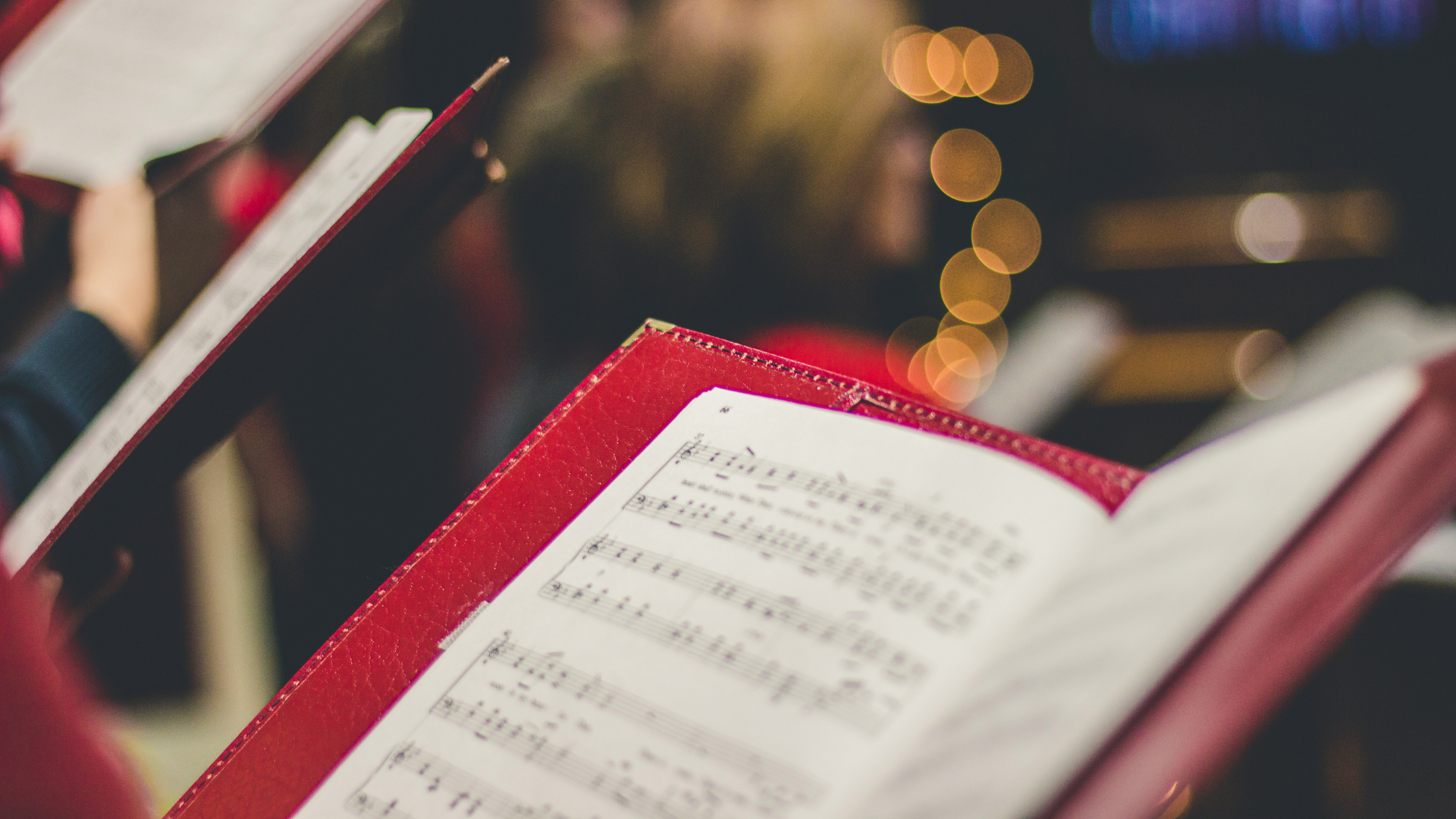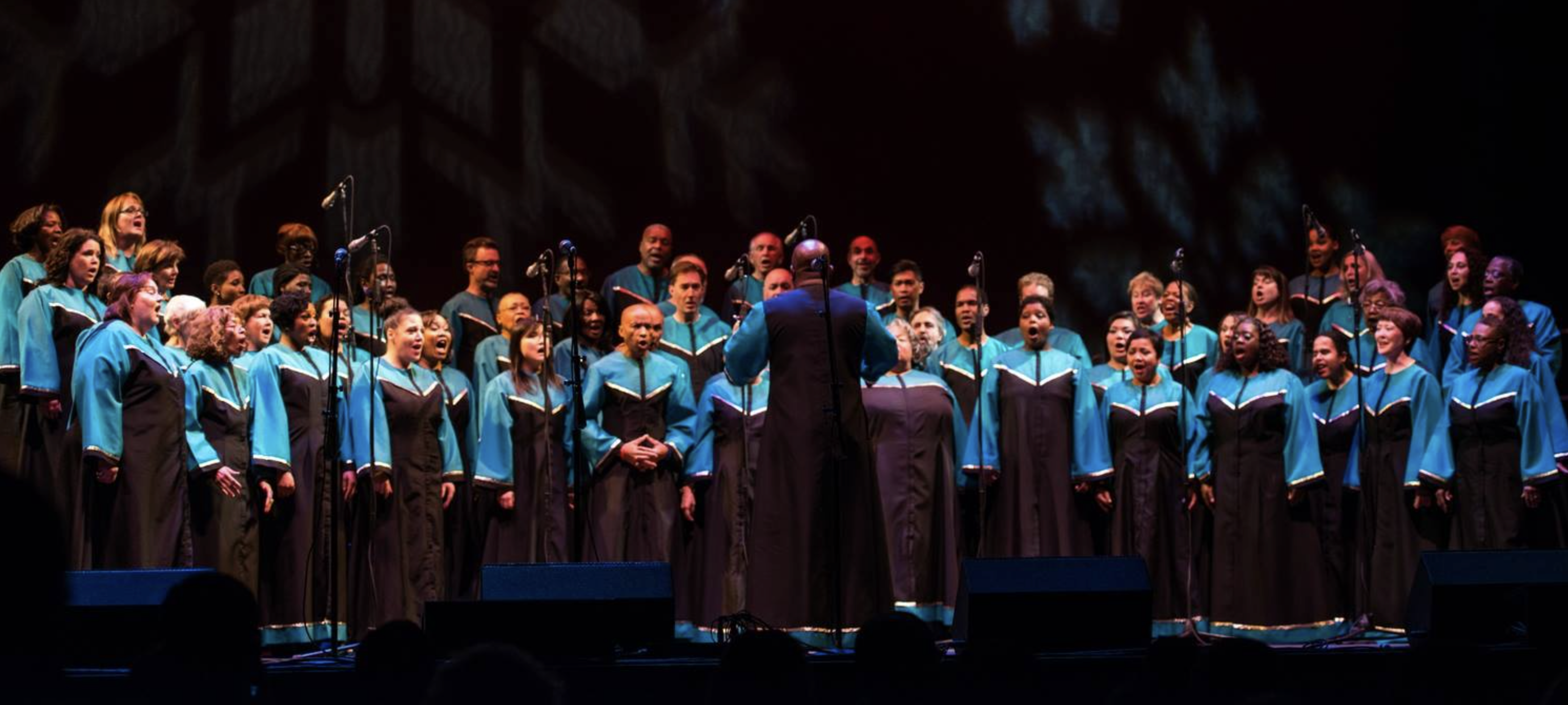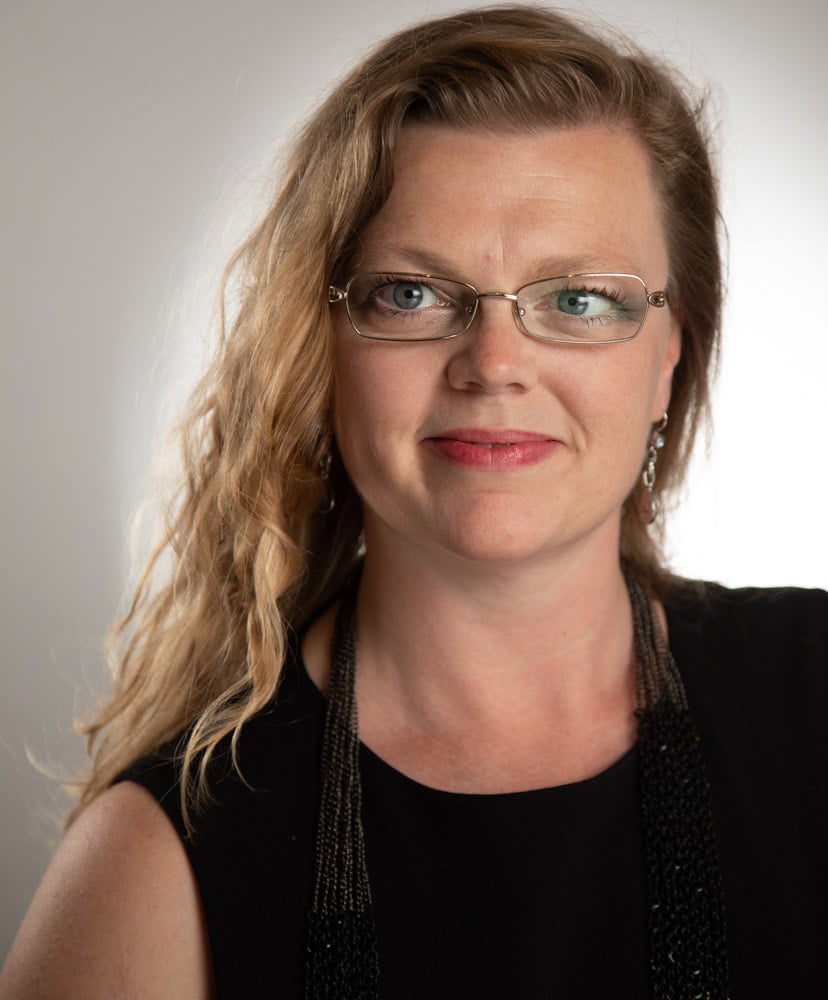
In this changing landscape, where fewer people find resonance or support within traditional church structures, where do we turn to fulfill spiritual, communal, and support needs within society?
Enter community arts organizations, where the rehearsal hall and performance stage transform into a secular and sacred space for diversity and unity; Where choirs emerge as beacons of harmony, not merely through notes and lyrics, but in the intertwining of disparate lives.
Seeking a Different Connection
A recent Pew Research Poll shows that nearly 30% of Americans check “None” when asked about their religious beliefs. That’s up from 16% over just the past decade and a half. As the NPR article "Religious Nones Are Now the Largest Single Group in the U.S." highlights, an increasing number of individuals are stepping away from traditional religious affiliations, seeking a different kind of connection.
This departure, however, doesn't signify a retreat from community; rather, it calls for a reimagining of where and how we – as individuals and society - find our sense of belonging. In the ever-evolving symphony of American identity, the rise of the "religious nones" signals a profound shift in our cultural landscape.
This decline is not new – but it has sharpened over the past decades. Gallup articles in 2019 and 2021 talk about the seismic shift in American churches, marked by closures and dwindling congregations. “U.S. Church Membership Falls Below Majority for First Time”
This reflects a broader societal trend away from organized religion – from a high of 76% in the early 1950s, to a low of less than 47% at the time of polling.
This transformation shows a significant cultural change, especially among younger generations distancing themselves from traditional faith communities. And, there is reason to believe the COVID-19 pandemic may have further impacted this trend – with some polls showing churches still missing 1-in-4 worshipers compared to pre-pandemic attendance.
Reasons for declining religious services attendance range from timing and logistical challenges to deeper issues, such as perceived judgmental behavior and disagreements on political and social stances. This evolving landscape has an unintended consequence: a surplus of closed churches. While this may lead to a boom in the real estate market and opportunities for creative repurposing, if we look beyond, there is another critical consequence: Historically, places of worship have served as vital community hubs, providing not only spiritual guidance but also acting as centers for social, educational, and charitable activities.

The Church broadly, and individual houses of faith particularly, have served as spaces for communal gatherings, offering a sense of belonging and fostering connections amongst diverse individuals. Educational initiatives, often originating from religious institutions, have been instrumental in shaping societies' intellectual landscapes – and locally, even just providing essential pre-school and childcare resources. Churches have played pivotal roles in healthcare, too: at the larger end, establishing hospitals that serve community well-being; and on the hyperlocal level, providing resources like counseling services, or crowd funding for medical support needs of congregants.
Faith organizations have also been influential in advocating for social justice and societal change. Many movements for civil rights and other humanitarian causes found roots and nourishment in religious communities. Churches, as social institutions, have often been at the forefront of addressing societal issues and advocating for positive transformations. They serve as platforms for community organizing and collective action, bringing people together to address shared concerns. They are hubs of social connection, resulting in small-business clients, life-long friendships, even marriages and families.
Economically contributing by creating job opportunities through affiliated schools, hospitals, and community programs, they've also been involved in philanthropy, channeling resources to support those in need. Faith-based institutions have been integral to social structures, influencing education, healthcare, justice, and community welfare, contributing significantly to the fabric of societies throughout history.
The waning influence of traditional religious affiliations serves as an invitation – a social vacuum, even - for choral and arts organizations to step into the spotlight, providing solace, inspiration, and connection to those disenchanted with religion or marginalized by society. As the demographic of "religious nones" expands, community arts, especially choirs, can and should stand ready to fill the void.
Picture a space where individuals from disparate backgrounds, ages, faiths, and various professions, ranging from lawyers and teachers to plumbers, politicians and tech professionals, unite in a chorus of voices. The decline in traditional religious spaces can transform into an ascent for community arts, where diversity is not just recognized but celebrated.
 Photo provided by www.oigc.org.
Photo provided by www.oigc.org.
Choir as Community
The desire of younger generations for connection, even as they reject religion and traditional social structures, resonates deeply with the narrative of the religious “nones.” Diverse in background, age, and profession, these individuals seek community beyond conventional religious spaces, highlighting the need for alternative hubs that foster camaraderie and shared purpose. This societal shift emphasizes the importance for community arts organizations to adapt to changing community values and demographics. As traditional pillars of community influence diminish, choirs and similar organizations like community theatres and orchestras, become crucial for fostering social connection, acceptance, and cultural inclusivity. This evolution requires arts leaders to understand the external factors shaping these changes, and position our respective organizations accordingly.
Choirs create a space where vulnerability and cooperation are valued – where you find less of the political divide so focused on by the media, less of the cynicism of our modern culture. People of all walks of life come together around a common purpose: Music.
Dogma, policy, hubris can all be left at the door.
This is what I love about my work with the Oakland Interfaith family of choirs. Our 350+ members range in age from 5-100, with socio-economic, racial, and faith backgrounds reflecting the incredible, rich diversity of the Bay Area. Every day, I see people come together around the unifying power of music – the common denominator being each person’s own unique voice.
It is work, no doubt, to leave our differences and disagreements at the door, but for two hours each rehearsal we transcend the discord and come together in song.
The Opportunity
As arts organizations, it is our role and responsibility to be conscious space-makers. We literally and figuratively build community every day. But why are choirs so particularly well suited to fill this growing societal void? Because nearly everyone can sing! The barrier to entry is quite low – singing is one of the most accessible artforms because nearly all of us come with our own instrument, free of charge, which we carry around with us everywhere we go.
And, because we all love music! According to a survey by Nielsen, 93% of Americans listen to music every week, and the average time spent listening to music is 26.9 hours per week.
The National Endowment for the Arts published a 2017 report, “U.S. Patterns of Arts Participation”, which showed that 54% of Americans participate in making art – almost 40% selected performing arts, and of that group singing was the most popular artform, at 25%. When asked how frequently people participated in an arts activity, singing tops the list with 70.2% engaging weekly, with music making on computers or instruments coming in distant second and third places at ~48% each.
In 2019, Chorus America’s The Chorus Impact Study: Singing for a Lifetime corroborates the NEA numbers – this study reported more than 54 million people sing in one of 275,000 choruses around the United States. At more than 16% of the US population, that’s 4 in 25 Americans.
- That’s on par with the number of people who are regular runners (54M).
- That’s as many people who Camp (25M) and Hike (23M).
- That’s more than the number of people who participate in Target Shooting (14M), Hunting (15M), and Fishing (22M) combined (51M).
- That’s more than the number of people who play American Football (5M), Soccer (13M), Basketball (15M), and Baseball (15M) combined (49M)!
- Remember, 16% is also the percentage of Americans who checked the box “None” on religious surveys in 2007 – now up to 30% in 2024.

So, Why Choirs?
In the absence of religious doctrine, community arts organizations have an opportunity to become the modern sanctuaries of shared experience and personal growth.
The choir, with its diverse membership, becomes a testament to the power of music in transcending barriers and fostering unity. It's not merely about individuals singing; it's about creating a space where people of all backgrounds can find a different kind of spiritual connection—one rooted in the shared joy of artistic expression and human connection. Choir serves as a microcosm of a harmonious society—one that values uniqueness, embraces vulnerability, and thrives on collective trust and learning as singers unite their voices in a shared pursuit of artistic expression. Plus, it’s fun!
Singing stands as a powerful equalizer, transcending societal barriers and providing a unique space for diverse voices to harmonize. The voice box, a singular and unrepeatable instrument, cannot be bought or replicated. In a choir, everyone walks in with their own distinctive sound, creating a collective of individuals – each unique, each valued. This inherent uniqueness fosters an environment where diversity is not only acknowledged but celebrated.
Participating in a choir demands a profound level of vulnerability as singers expose their authentic selves through the resonance of their voices, forging connections beyond age, background, or profession. This shared vulnerability binds members together, creating a harmonious tapestry where differences blend seamlessly. Moreover, singing in a choir necessitates humility and a willingness to learn. No one walks in as the sole expert; instead, there's a collective admission that everyone is on a continuous journey of improvement. Members agree to trust in someone else's artistic vision, surrendering their egos for the greater good of the ensemble. These acts of collective trust transform the choir into a collaborative space where each voice contributes to a larger, more intricate masterpiece – where the boldest voice and the softest blend together, each as important as the other.
Choirs serve as catalysts for community building, offering relevance and connection in a fast-paced world. As society becomes increasingly fragmented, the choir becomes a refuge where individuals can build meaningful relationships outside their usual spheres. This becomes especially pertinent when considering the decline in community engagement and the rise of social isolation. Choirs offer an antidote by providing a platform for diverse individuals to unite under a common purpose.
If our choral arts organizations embrace our role as community builders; if we reach out to our younger neighbors who have had arts and music stripped from their school experience, reach out to those disaffected by religion and dogma, politics and division; if we expand our view of who we are as institutions and what we can be in our own communities; imagine the world we could create!
Imagine the business impact on our organizations if we welcome people seeking connection and provide space for them to find it.
In the melody of community, arts organizations responding to the yearnings of people of all walks of life seeking true and authentic connection, offer an alternative narrative—one where diversity is not a challenge but a strength, where belonging is not conditional on faith but on the shared heartbeat of collective creativity. As religious affiliations in our society continue to transform, choirs and community arts can step forward, weaving a new anthem of togetherness for a generation, a society, seeking connection in the midst of change.
What would that look like in your choir? How does this change your Mission? How does this inform how you measure “impact”? Your music and venue selection? Your recruitment efforts? Your audition and dues policies? Share your thoughts in the comments below.

Maren’s two-decades’ leading associations and arts nonprofits has involved collaborations with people of all walks of life, across varied industries. With personal roots in religious and community choruses, to professional performance and directing opportunities, her experience spans arts, social justice, education, and nonprofit sectors. She loves solving problems, helping develop purposeful organizational plans and mission-focused strategies. She earned her M.Sc. in Strategic Planning, in addition to holding an AA in Vocal Performance and a BA in Marketing. A life-long learner, Amdal earned the Claritas™ Investment Certificate offered by CFA Institute, and is a member of the American Society of Association Executives through which she maintains the Certified Association Executive (CAE) designation. Choirs have been a cornerstone in her understanding of human connections, social justice, and personal growth. Now the Executive Director of the Oakland Interfaith family of choirs, Maren knows the resonance of a choir extends beyond the blending of voices, to building communities.

